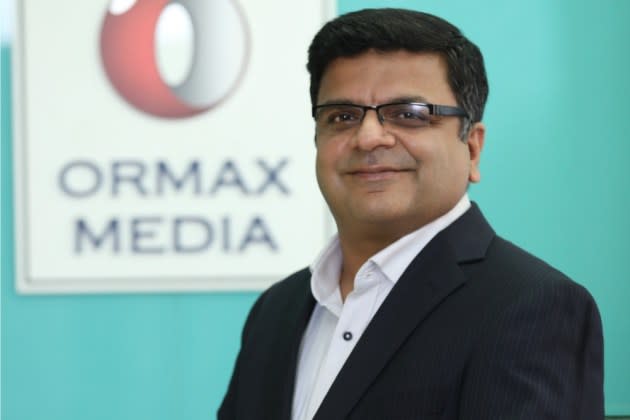Consolidation, Profitability Challenges Face India Streaming Sector, Says Ormax Chief: ‘Indians Are Not Used to Paying for Content’ (EXCLUSIVE)

Shailesh Kapoor, head of Indian media consulting firm Ormax, says that profitability challenges and consolidation are trends to look out for in India’s complex streaming market.
Kapoor notes that streaming penetration remains limited, with paid content reaching only 10-14% of the 1.4 billion population. “The general belief is that this number will go up, leading to scale and profitability,” he explains, while cautioning about slowed growth since the pandemic.
More from Variety
Walmart+ Week Launches With Free Paramount+, YouTube Premium Offer for Members
Indian Documentaries Ride Global Wave as Local Funding and Distribution Concerns Remain
Cost remains a hurdle, Kapoor says. “Indians are not used to paying for content. In general, TV has been very low cost in India for years now. And in streaming, there are two costs, the data cost, and then there is a subscription cost. So, it is a double cost structure. Many Indians do not fully understand why they should be paying for content when so much content is available for free on TV and on YouTube,” Kapoor said.
“It’s going to be challenging, because the first two, three years after the pandemic, the growth came largely from the top 10-15 cities. Since then, those cities have saturated, whoever had to subscribe to whichever apps, by and large [have now] subscribed,” Kapoor added. “Now, the only way to grow is that you get people in smaller towns and rural India to begin to pay. That is not happening very easily. It’s a very slow process.”
On industry consolidation, Kapoor observes: “The whole merger and acquisition thing in India is not so streaming-specific. It’s probably more being driven by the overall landscape, including television.” He cites the failed Sony-Zee merger discussions as primarily motivated by their television businesses. Television remains the single largest component of India’s media and entertainment sector, with a valuation of $8.3 billion in 2023, according to the recent FICCI-EY industry report.
Kapoor points out a paradox in the market: “You feel that the market is getting more consolidated around three, four major players, yet at the same time, there is a long tail of regional players which are equally strong,” Kapoor said.
The exec highlights the upcoming Reliance-Disney deal as a potential industry template. “What happens with Reliance and Disney over the next six months will really be a good case study,” he predicts.
Kapoor acknowledges unique models like Amazon Prime, which integrates shopping and video services, as potentially more viable. He also notes the trend of content library acquisitions, exemplified by Amazon’s purchase of MX Player assets, drawing parallels to historical TV industry practices, for example SAB TV which was acquired by Sony in 2005.
Kapoor also emphasizes the importance of theatrical films on streaming platforms, with both Netflix and Amazon benefiting from their strong theatrical film libraries. “The Indian market really relies on… the importance of theatrical films on OTT [streaming], because it’s a huge boost to subscriptions and to the preference for using certain apps over the others,” Kapoor says. He notes that for many Indian audiences, especially in the South, web series are still a nascent format, and theatrical releases remain a major draw.
Sports content offers advertising revenue potential but faces high rights costs, Kapoor said. Disney+ Hotstar, despite losing IPL cricket digital rights, remains a significant player, Kapoor added. “Last year, one of the things Jio Cinema changed forever is that they made sports free… by putting IPL in front of the paywall.” This move has altered the monetization strategy for sports content on streaming platforms, Kapoor said.
Looking ahead, Kapoor identifies Netflix, Amazon and JioCinema as the most promising players in the Indian streaming market. “Netflix is doing amazingly well in the last two years,” Kapoor states. After a challenging initial period in India, the platform has seen significant growth, with subscribers reportedly increasing from 7-8 million to over 11 million in two years, the executive said. Kapoor attributes this success to the introduction of a more affordable mobile plan and improved content quality. He suggests keeping an eye on JioCinema’s strategy in the coming months, noting its recent launch of disruptive pricing at INR29 (35 cents) per month.
The analyst concludes by emphasizing the need for quality content to accompany competitive pricing, stating, “Low pricing is not a guarantee in itself if the content quality doesn’t match up.”
Best of Variety
Sign up for Variety’s Newsletter. For the latest news, follow us on Facebook, Twitter, and Instagram.

